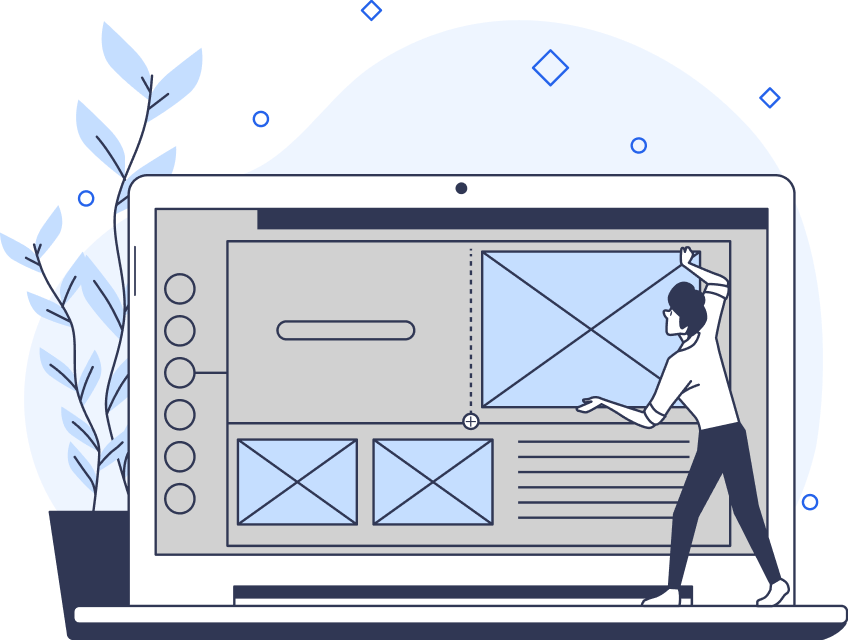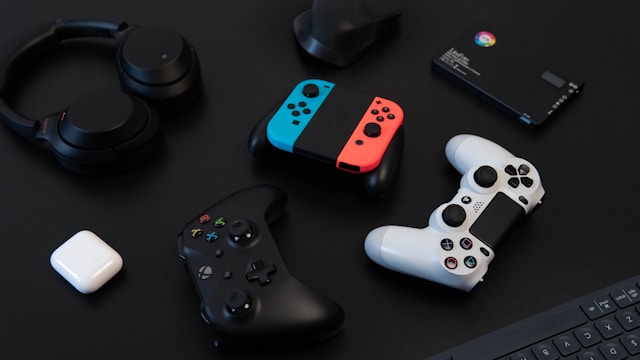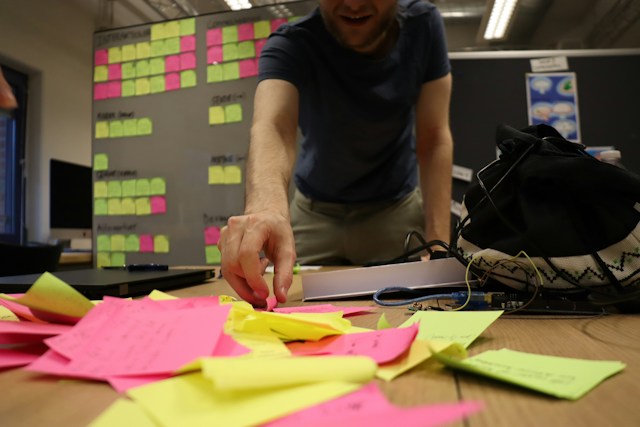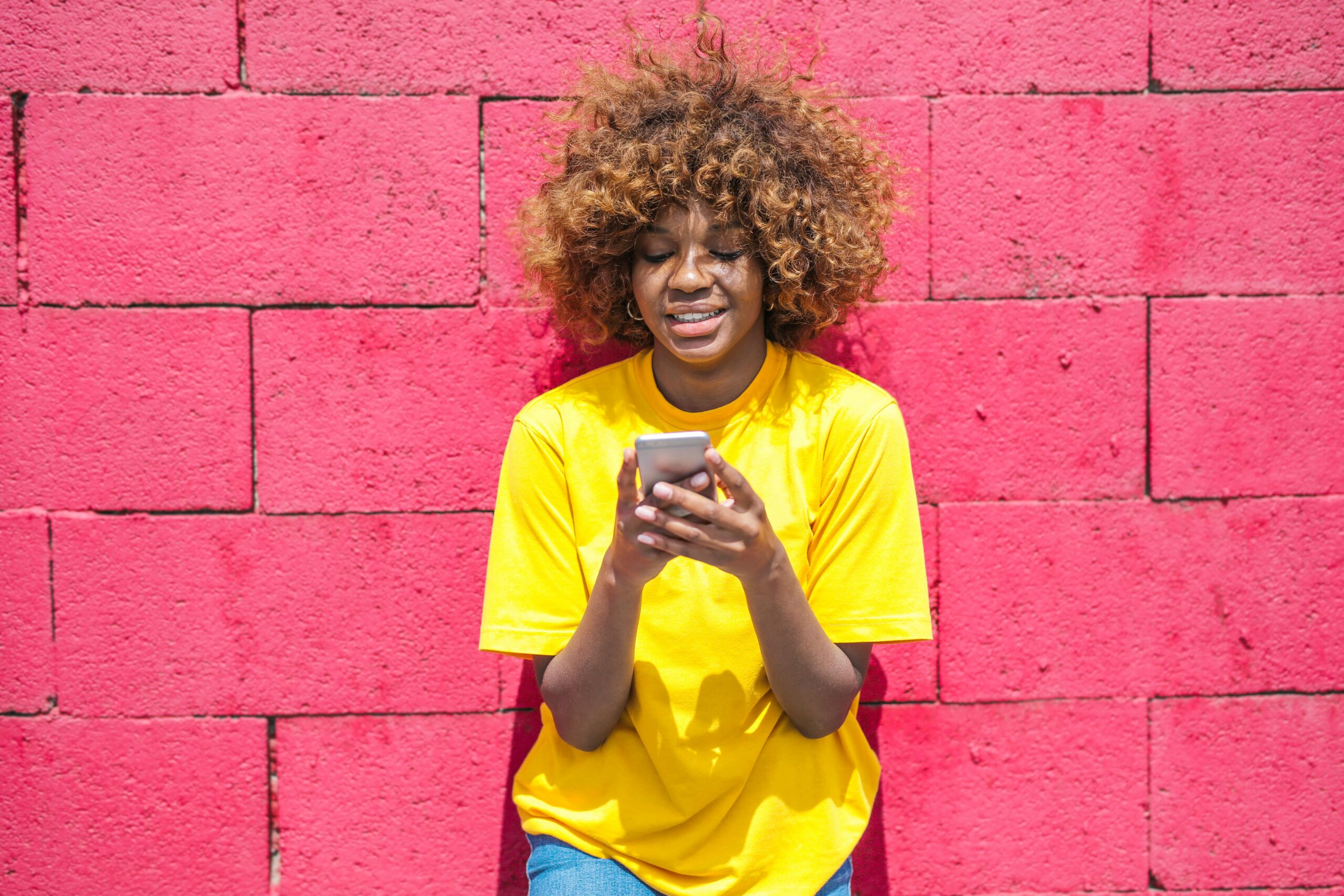Modern graphic design is the key to creating a more engaging and refreshing user experience.
For that reason, graphic designers should always stay current with contemporary design trends and techniques.
So, in today’s guide, we’ll reveal what innovative graphic design looks like. Specifically, we’ll explore the visual elements, trends, styles, and patterns that modern graphic designers leverage to enhance their contemporary designs.

Modern Graphic Design: A Simple Definition
It’s easy to say that modern visual design is simply a celebration of technological advancement in the digital design industry. In actuality, it’s so much more than that.
Modern graphic design is about pushing the boundaries of the conventional visual landscapes with which we are familiar. It focuses on abstract concepts, intriguing aesthetics, and purposeful content.
Just think of the book Sagmeister & Walsh: Beauty by innovative graphic designers Stefan Sagmeister and Jessica Walsh. This book explores the meaning and influence of beauty to understand why mankind gravitates toward it.
Ultimately, contemporary graphic design is about eliciting thought-provoking emotional responses from the viewers of your art.
Moreover, innovative graphic designs are not only used in art. Social media platforms also try to implement eye-catching designs in their features. For example, Instagram recently released new fonts and effects to let its users dabble in creating impressive graphic designs.
8 of the Latest Graphic Design Techniques
You know what contemporary graphic design focuses on. Let’s shift focus to the graphic design elements that graphic designers use to bring their innovative ideas to life.
- Bright colors: Contemporary graphic designers will combine vibrant colors with color psychology to evoke specific emotions from their target users. Bold colors, in particular, strike the perfect balance between visually pleasing simplicity and immediate emotional impact.
- Experimental typography: By using typographic techniques such as distortion, overlapping, and three-dimensionality, designers can create bold, memorable typography.
- Geometric shapes: The sharp, clean lines of geometric shapes help designers add depth and visual intrigue to minimalist designs.
- Organic shapes: Professionals also commonly use imperfect, natural shapes to add a sense of fluidity to their designs.
- Rich textures: Designers often draw inspiration from a range of textures, including paper, fabrics, and metals. Again, this technique adds depth to a user’s visual experience.
- White space: Contemporary designers value the empty space between design elements, using it to emphasize other, more impactful visual elements. White space is also a great tool for strengthening a design’s visual hierarchy.
- Realistic imagery: High-quality photography and 3D realistic visuals help communicate a design’s core message. They can also provide an intriguing contrast to the surreal elements of modern graphic design.
- Contrast: Graphic designers nearly always leverage the differences in colors, sizes, and shapes of their visual elements to drive engagement.
However, in contemporary graphic design, visual elements are not the only means of creating contrast. In addition to visual contrast, graphic designers also create conceptual contrasts, like nature vs. technology, to create resonant narratives.
Contemporary Graphic Design Trends
Now that you know about contemporary graphic design elements, it’s time to see them in action. Below, you’ll find some of the top trends in modern visual design.

Anti-Design
The anti-design trend flips typical design aesthetics on its head. It’s unapologetic, unique, and full of chaotic visual clutter.
Anti-design celebrates the techniques you’d expect it to – a mismatch of colors, asymmetry, maximalism, and overlapping imagery and typography.
Use this trend sparingly. You should take caution when using the elements of the anti-design trend; they can quickly compromise your design’s accessibility.
Ultimately, the anti-design trend works best for brands that want their users to perceive them as edgy and enthusiastic.
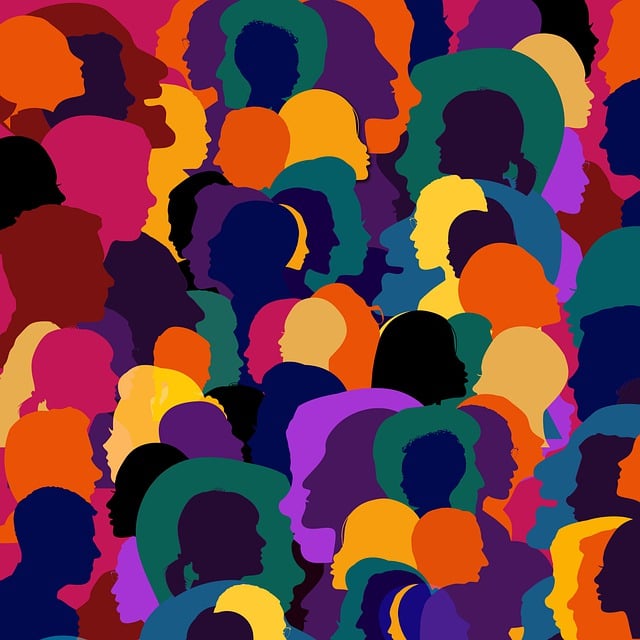
Inclusivity
Inclusivity is incredibly important, especially in terms of respect, unity, and peace, and modern graphic designers know and celebrate this.
In terms of visual inclusivity, this means that designers will use imagery, icons, and even hand-drawn illustrations that reflect diversity.
By implementing inclusivity into your designs, you can celebrate all of your users, regardless of age, race, gender, and ability. This is how you demonstrate your appreciation of all user types, creating a more universal user experience.
Overall, inclusivity is more than just a visual trend; it’s the gateway to true user empathy.
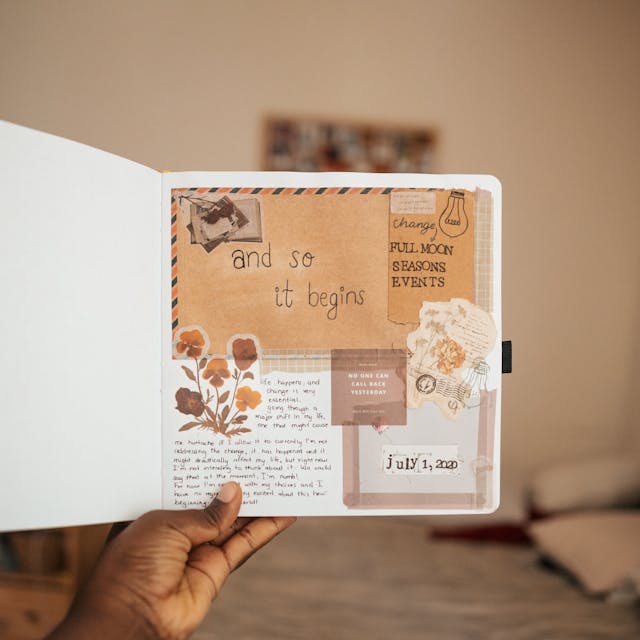
Scrapbook Aesthetics
Scrapbooking is only growing more popular, especially on platforms like TikTok, which hosts millions of scrapbook-related posts.
With cute hand-written typographic styles and collages full of interesting textures and images, the scrapbook aesthetic is thriving. Scrapbooks elicit a sense of nostalgia from users, which designers utilize to create emotional connections between their users and designs.
But most importantly, scrapbook aesthetics add a personal, human touch and relatable narrative to any digital design.
To ensure your designs capture this trend, experiment with a medley of textures, shadows, shapes, and overlays. This will effectively mirror the tactile feel of physical scrapbooks, adding another layer of intrigue to your designs.
The 3 Most Modern Graphic Design Styles
Along with design trends, you can always take inspiration from the modern graphic design styles we’ve discussed below.
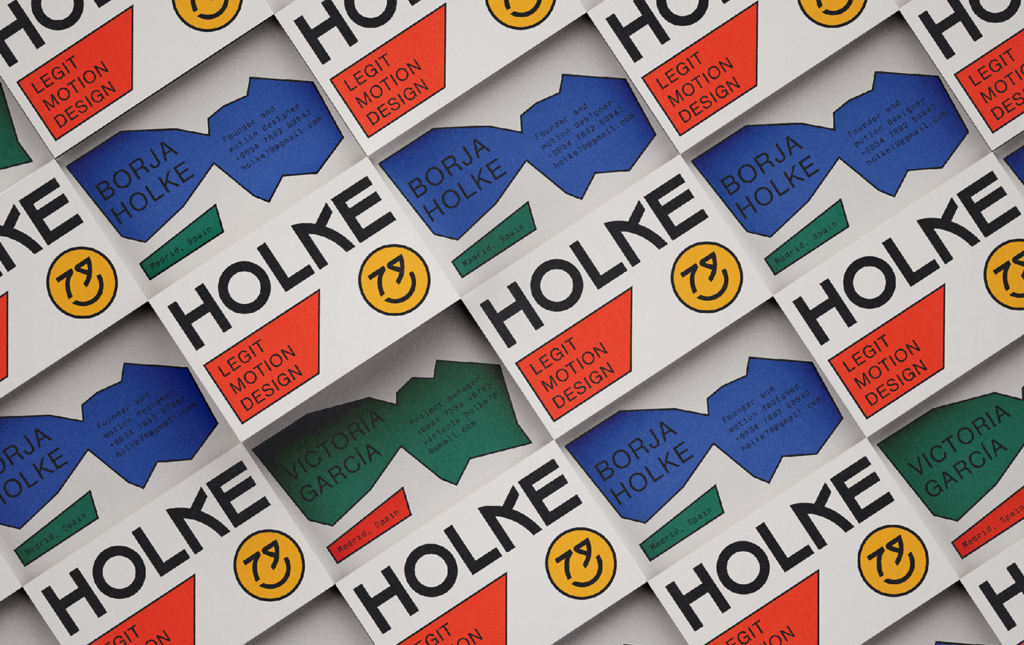
1. Bauhaus
A German artistic movement, Bauhaus prioritizes functionality above sentimentality and flourishes. This principle makes the Bauhaus style perfect for simple, minimalistic designs.
To emulate Bauhaus characteristics, you should use geometric shapes, clean, crisp lines, and balanced, asymmetrical layouts. You should also work predominantly with sans-serif typographic elements for readability and accessibility.
As for color choices, you should utilize a limited color palette that contains only the primary colors.
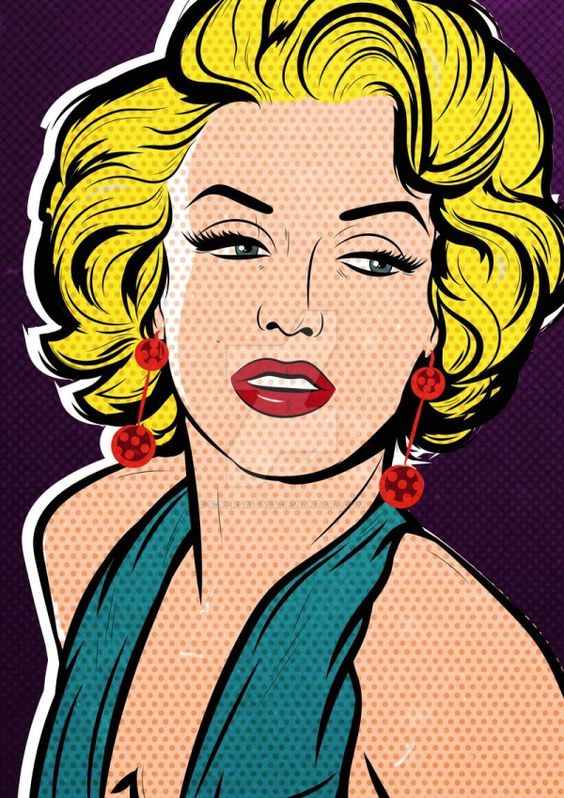
2. Pop Art
Another popular movement, the Pop Art style of the 1950s, spoke to the rebellion against traditional art. Taking inspiration from commercial and popular culture, Pop Art celebrates abstract expressionism, fitting in nicely with modern graphic design’s values.
To incorporate Pop Art elements in your designs, you should embrace bold, vibrant colors, repetition, and realistic photography/imagery.
We also recommend that you take inspiration from comic books and especially advertising campaigns.
As a criticism of consumer culture, Pop Art carries a deep narrative and purpose. Your work should do the same to have a similar emotional impact as Pop Art does.
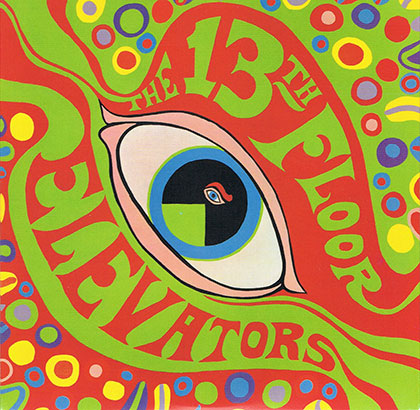
3. Psychedelic Design
The great thing about the psychedelic design style is that it’s the perfect opportunity for creativity and innovation.
Psychedelic graphic designs showcase surreal imagery, kaleidoscopic patterns, fluid lines, and intensely bright colors, reflecting youthfulness, radical thinking, and energy.
This style focuses less on visual communication and more on artistic expression. This is why you’ll often see hand-drawn, distorted letterforms with unconventional baselines.
To embody the values of psychedelic designs, you should unleash your inner fantasist and experiment with the elements listed above.
3 Top Modern Graphic Design Patterns
To inspire you further, we’ve revealed some of the most engaging modern graphic design patterns that you should consider using.
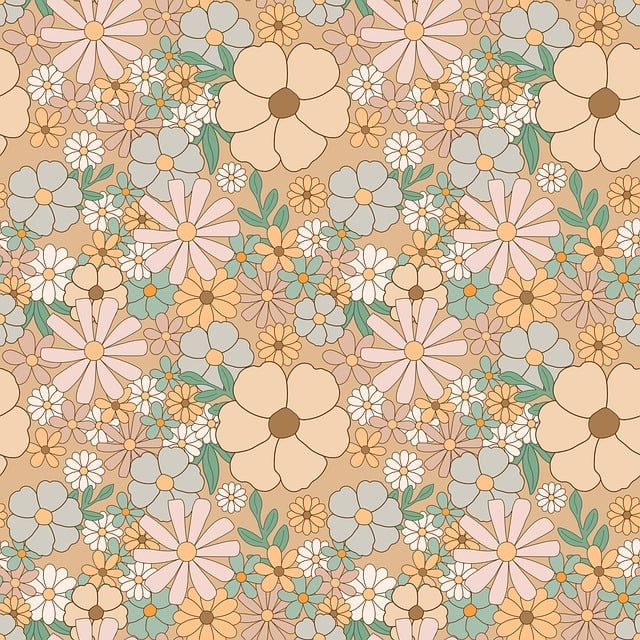
1. Retro Floral Patterns
At this point, it’s safe to say the modern user craves nostalgia. So, it’s only fitting that graphic designers use retro patterns, like vintage floral patterns, in their work.
Retro floral patterns mirror the fluid, imperfect shapes of realistic flowers and often utilize romantic, autumnal colors. These warm colors symbolize comfort and tranquillity, which can make a brand appear more approachable to its target users.
Best of all, floral patterns are incredibly versatile, meaning you can easily adapt them to suit any trend or style.
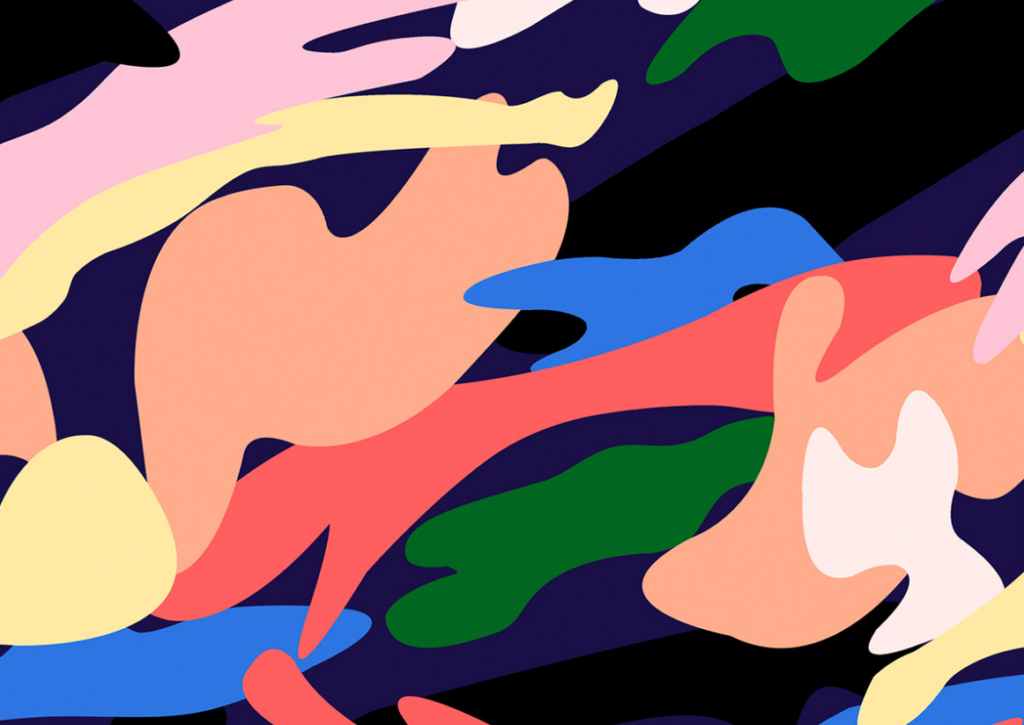
2. Colorful Camouflage Patterns
Camouflage patterns are intriguing enough on their own, especially with their unique, irregular shapes and fluid lines.
They can add an engaging, dynamic layer to your designs by mixing simple but vibrant contrasting colors.
What’s more, camouflage patterns are flexible, and with small adjustments, they can suit any brand or industry. Camouflage patterns also carry many cultural themes, from the military to modern fashion trends.
When in your design studio, think about how you could use these themes to create a thought-provoking narrative.
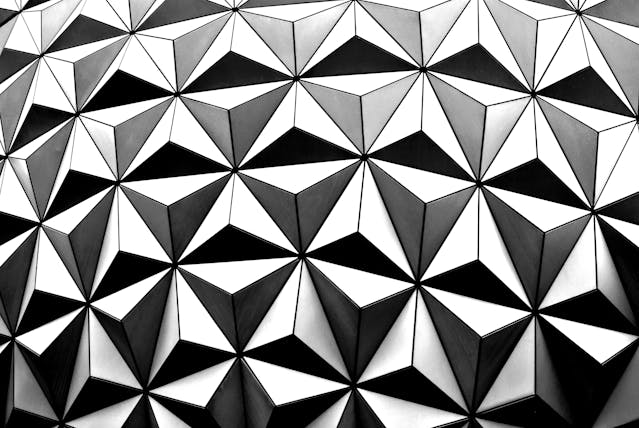
3. Geometric Patterns
Geometric patterns can be valuable if you want to create designs that convey a sense of sophisticated consistency.
With a bold selection of shapes, your geometric patterns could be the visual element that increases brand recognition and loyalty. Best of all, geometric patterns don’t need bright colors to be impactful; achromatic geometric patterns are just as visually striking.
Overall, geometric patterns are great at accentuating the focal point of your graphic designs.
FAQ
What is modern graphic design?
Modern graphic design encompasses the contemporary trends, techniques, and technologies that graphic designers use to create engaging, communicative visual content.
What is the most important thing to a modern graphic designer?
The most important things to modern graphic designers are creativity and communication. After all, graphic design is a form of visual communication, and designers must communicate their creative ideas through their designs.
What are some common mistakes to avoid in graphic design?
You should always avoid using too many fonts and colors and disregarding the value of negative space. Additionally, you should try to stay away from visual inconsistency, low-quality photography, and poor visual hierarchy.
Modern Graphic Design: Use Page Flows for Hundreds of Design Ideas
Keeping track of modern design graphic trends, elements, and techniques is a great way to create refreshingly unique user experiences.
As great as modern visual design is, however, it’s best not to forget the timeless techniques behind intuitive user navigation. After all, your users won’t be able to enjoy your visual content if they can’t navigate it. That’s why you need Page Flows.
Every designer, regardless of experience, can benefit from learning how successful products showcase a diverse range of user flows. That’s why we host a vast supply of recordings and screenshots detailing crucial flows.
From reactivating accounts to reviewing and rating, we cover every flow that your website or mobile application could ever need. Best of all, our resources are as versatile as they are inspirational, coming from dozens of successful brands and industries.
Modern graphic design will shape the future of impactful visuals. Page Flows will help you shape your future products’ exceptional user flows.
Get started today to find the flow inspiration you need to level up your designs!


